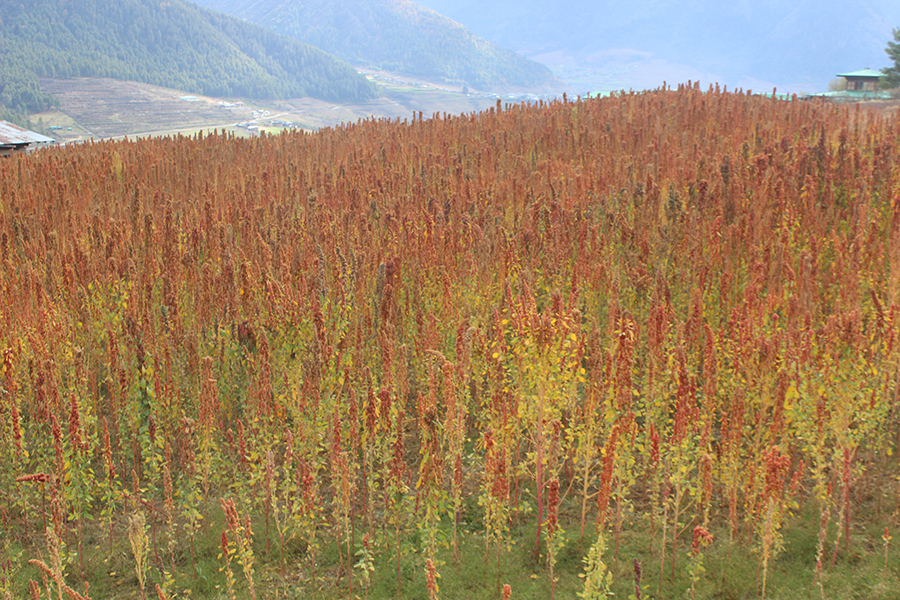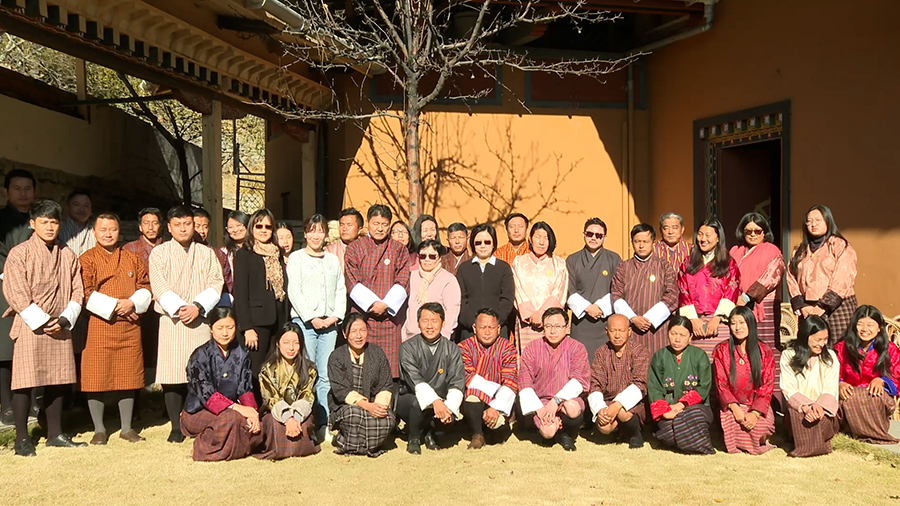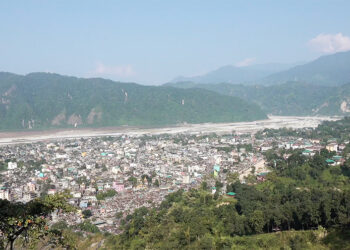
Quinoa farmers can now look forward to a better market for the product. Locally known as Ashi Heychum, the crop’s marketability will be improved as food-based entrepreneurs in the country are trained to enhance their skills in value addition and food product development. This means growers can sell their produce in various product forms. This is expected to encourage large-scale quinoa cultivation and help achieve the country’s food self-sufficiency goal.
Quinoa, a nutrient-dense cereal is relatively new to Bhutanese farmers. It was introduced in the country in 2015 from Peru to enhance the food and nutrition security of Bhutanese.
The crop was then promoted across all 20 districts following His Majesty’s command during a royal visit to the National Centre for Organic Agriculture in Yusipang, Thimphu.
Today, Bhutanese farmers grow four varieties of quinoa.
The crop was identified as Bhutan’s priority crop for the “One Country, One Priority Product” initiative due to its nutritional benefits and market competitiveness.
Although the crop can be grown at varying altitudes from the southern lowlands to the high altitude regions up to 3500 meters above sea level in the north, farmers have been facing market issues.
However, the workshop including hands-on sessions by experts from Mahidol University in Thailand taught participants how to create market-ready quinoa products, integrating traditional Bhutanese recipes with modern food processing techniques.
 Organized by the Department of Agriculture Marketing and Cooperatives in collaboration with the Food and Agriculture Organisation, the participants were trained on recipe development, nutrient profiling, and packaging techniques.
Organized by the Department of Agriculture Marketing and Cooperatives in collaboration with the Food and Agriculture Organisation, the participants were trained on recipe development, nutrient profiling, and packaging techniques.
“In the next few years, we are looking forward to large-scale cultivation of quinoa in the country. Through this workshop, we are preparing for large-scale marketing. We are exploring recipes to value add quinoa by making bread, biscuits, noodles, salads and all instead of eating and selling it only as a supplement for rice,” said Tashi Dorji, the Director of the Department of Agriculture Marketing and Cooperatives.
“Although we have been working as food entrepreneurs, this is the first time we have received hands-on training on how to make products. I am very grateful to the trainers and organizers for this opportunity. I am also very excited to go back home and implement these skills in creating new products,” said Sonam Zangmo, a participant.
Chimi Dema, another participant said, “As a representative, I will divert these skills and knowledge I got from this workshop to my entrepreneur friends. I will share with them how we can use quinoa to make different dishes.”
Quinoa is one of the foods with all nine essential amino acids and is considered a complete protein.
As Bhutanese farmers increasingly sell home-grown quinoa in local markets, quinoa dishes are being featured in hotel menus, and hospital and school meals as well.
The department is also supporting by conducting trial marketing of Bhutanese quinoa in Malaysia and Japan.
Quinoa cultivation increased from half an acre to almost 270 acres between 2015 and 2020 with an increase in production from around 100 kilogrammes to more than 35 metric tonnes.
Namgay Dema
Edited by Phub Gyem







